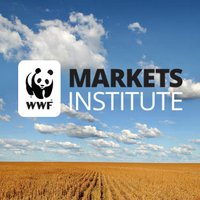
The Markets Institute @ WWF
@wwfinstitute
Food, ag, sustainability. Market issues, trends, tools and more. Sign-up: bit.ly/34wIjNU
ID: 950747159317700608
https://www.worldwildlife.org/initiatives/the-markets-institute 09-01-2018 15:12:41
828 Tweet
164 Followers
90 Following





Cocoa prices have skyrocketed in recent years, exceeding $10,000 per ton. In this week's ReThink Food newsletter, Jason Clay takes a look at the factors behind the market shift and what it means for other climate-impacted commodities. mailchi.mp/b9d3ff6276a9/2…






The International Cotton Advisory Committee issued a statement this week about decreasing production resulting from weather variability and increased heat. In this week's ReThink Food, Jason Clay looks at what this means for the industry. Read more: mailchi.mp/a0c47f79bc0a/2…




In addition to weather and climate change, US farmers now need to worry about many off-farm issues. In this week's ReThink Food, Jason Clay break down the increasingly complex challenges farmers face, including rising equipment costs and tariff impacts. mailchi.mp/f1595de16fa4/2…




Russia sells its wheat around the world. While exports in July and August, rose slightly, volumes fell almost 40% year on year. In this week's ReThink Food, Jason Clay examines what this trend means for Russia and its war in Ukraine. mailchi.mp/75add759ff53/2…




Undocumented workers in the US food sector have become a pivotal issue with the Trump administration and farmers alike. In this week's ReThink Food, Jason Clay takes a look at illegality in the food system and the impact of a reduced work force on farms. mailchi.mp/da2213c5a065/2…


